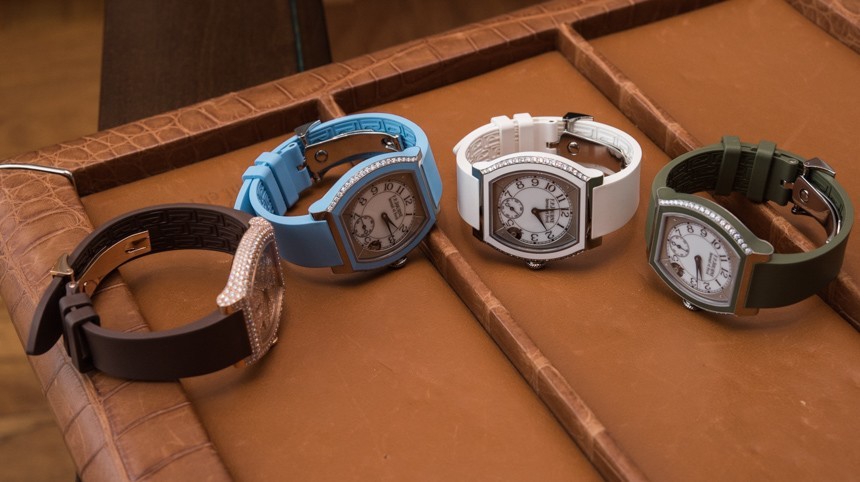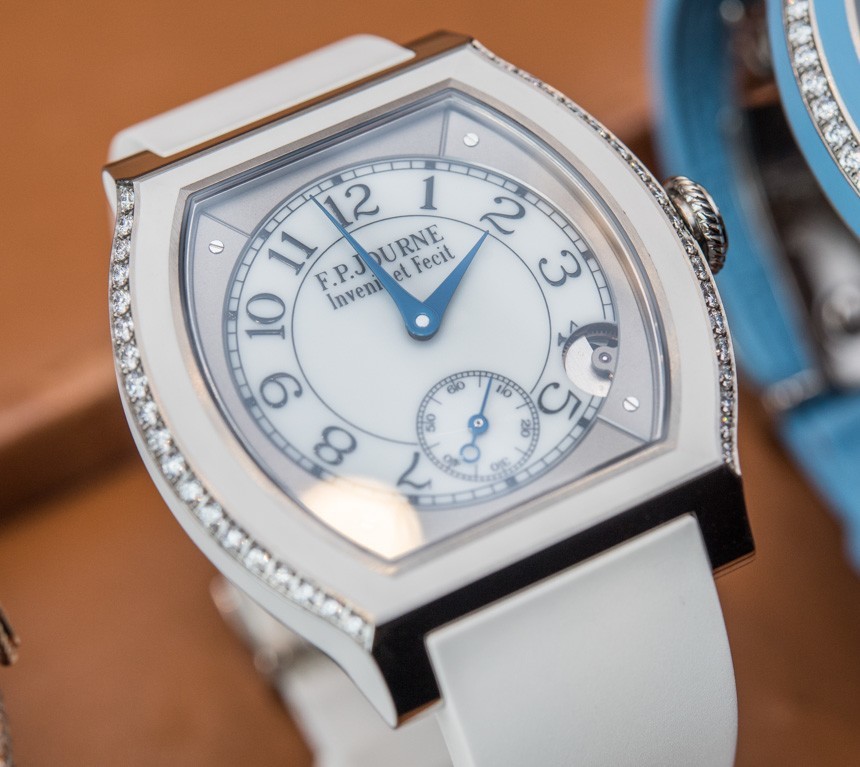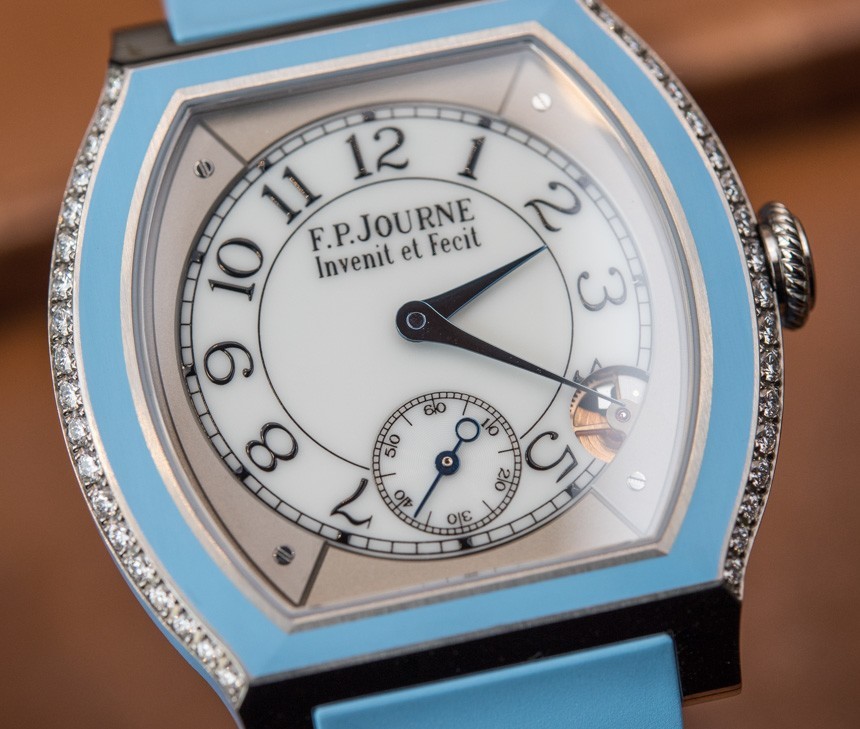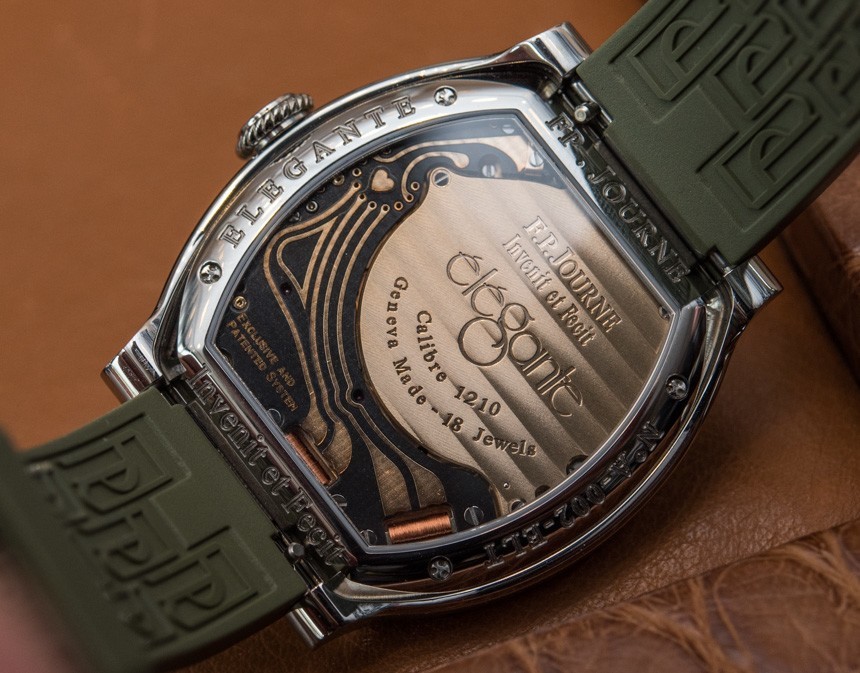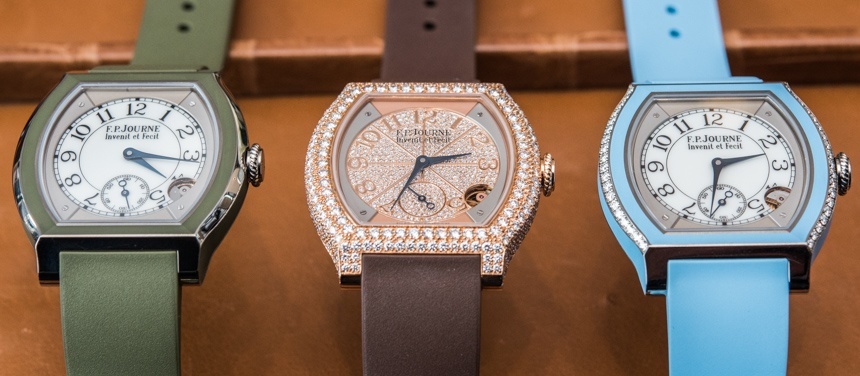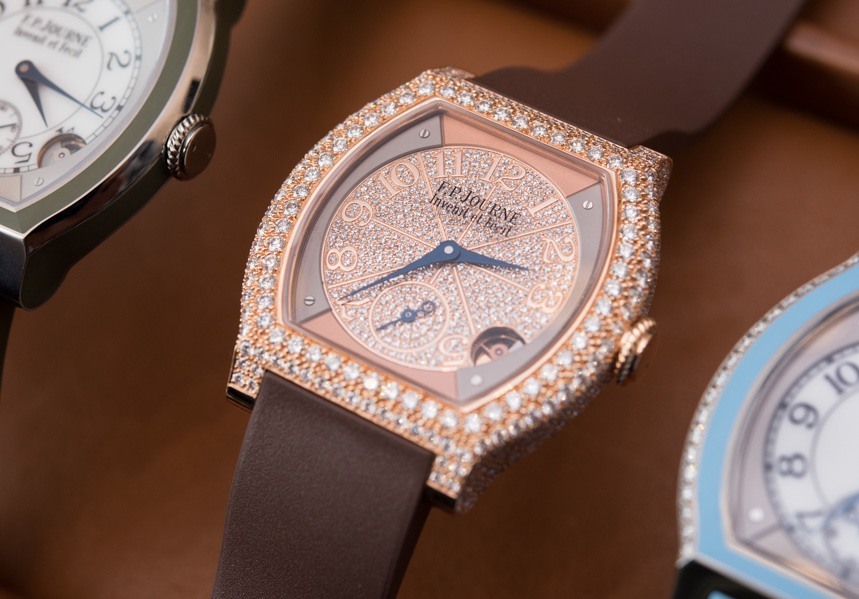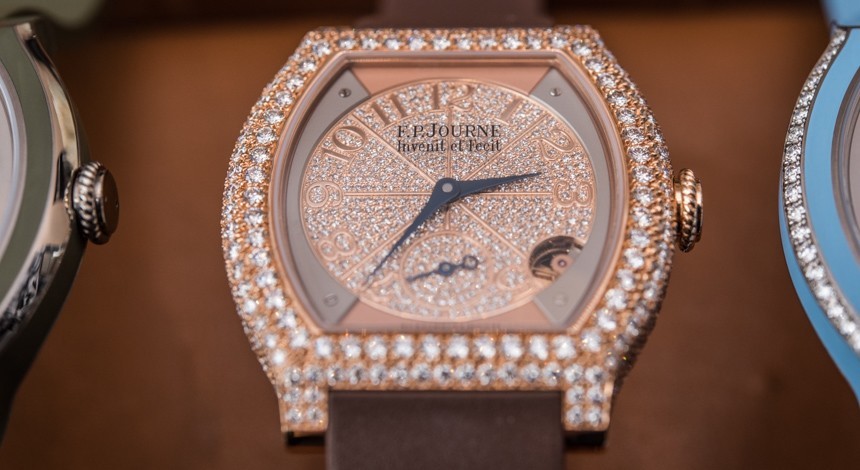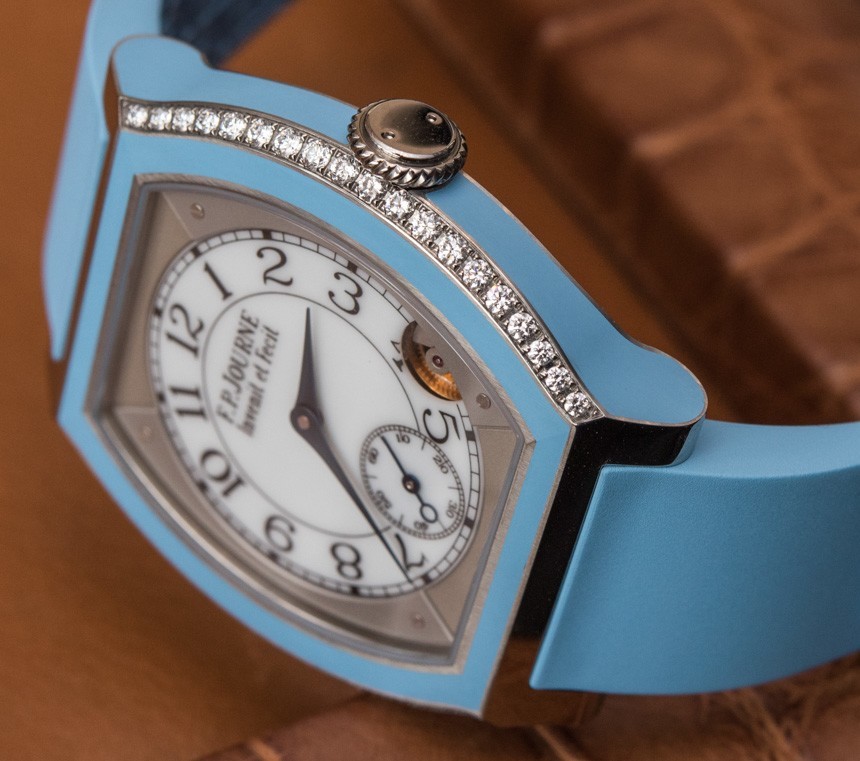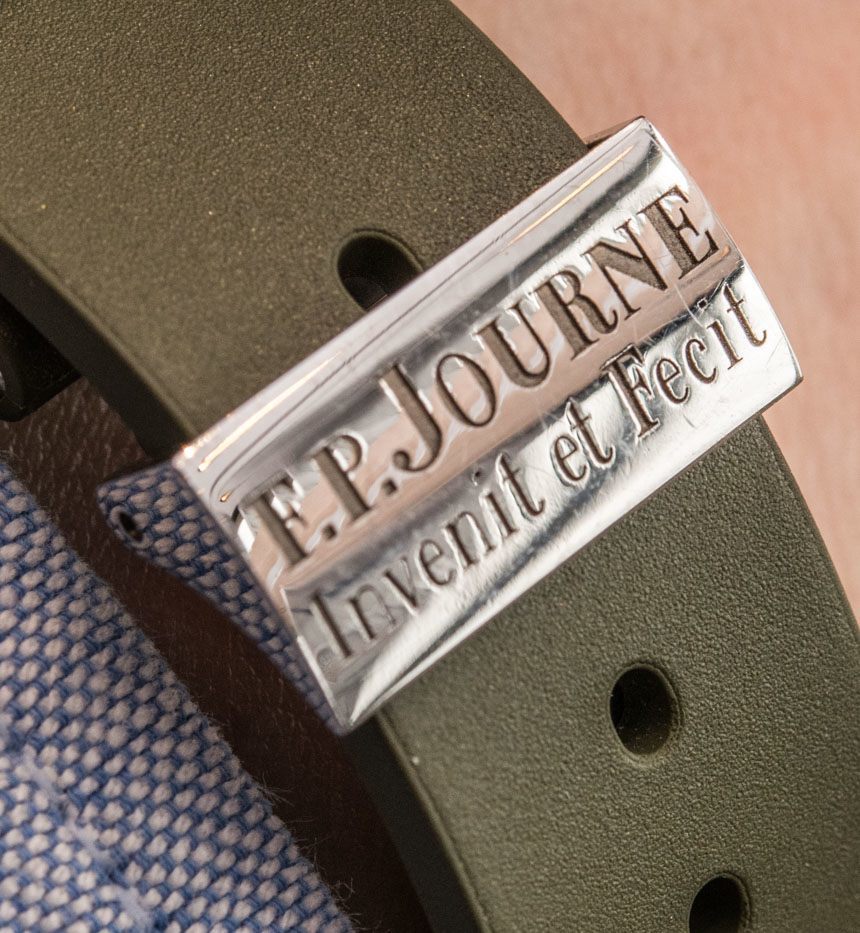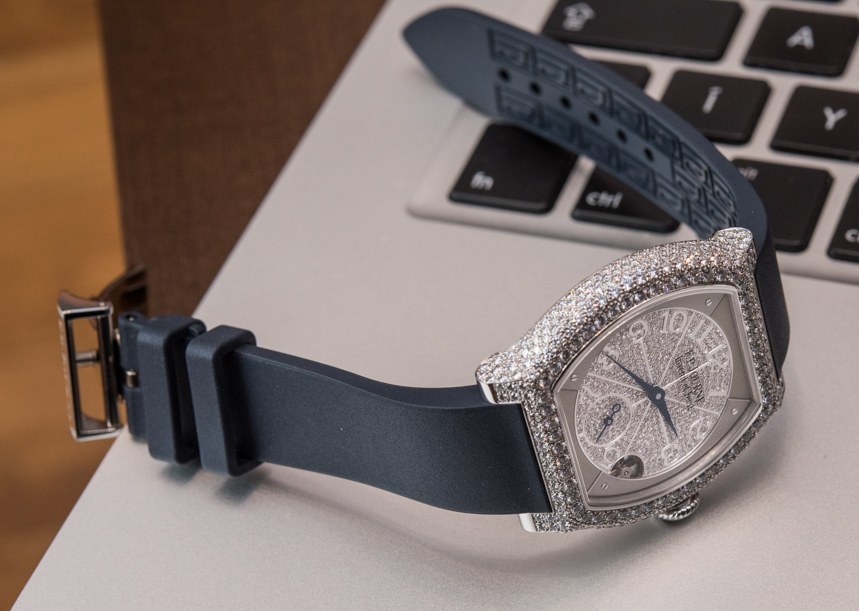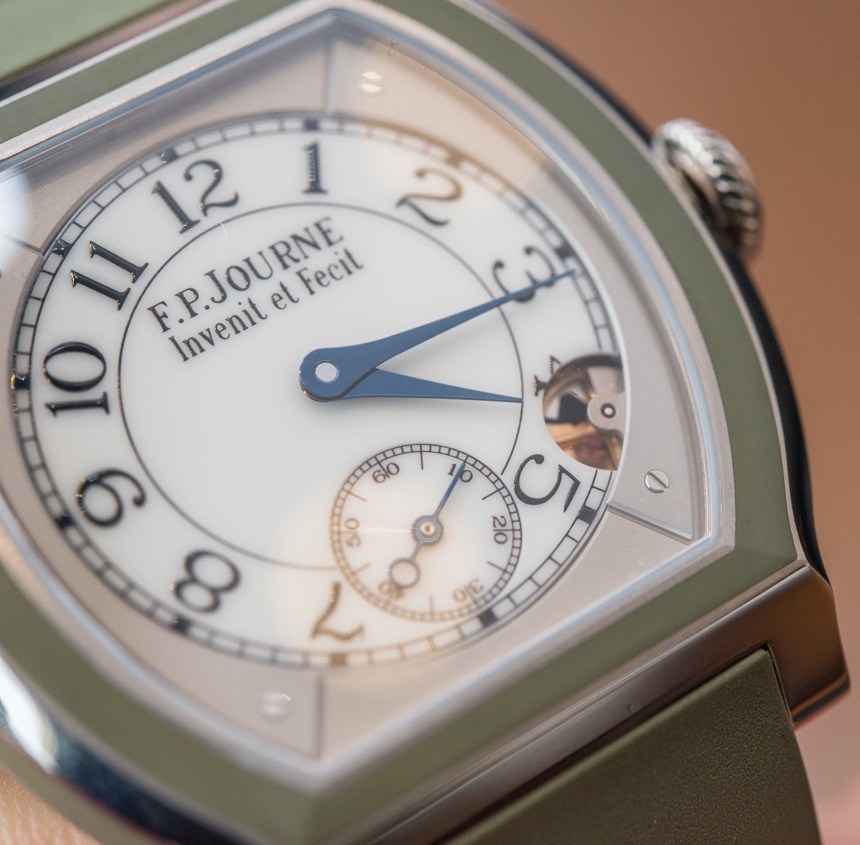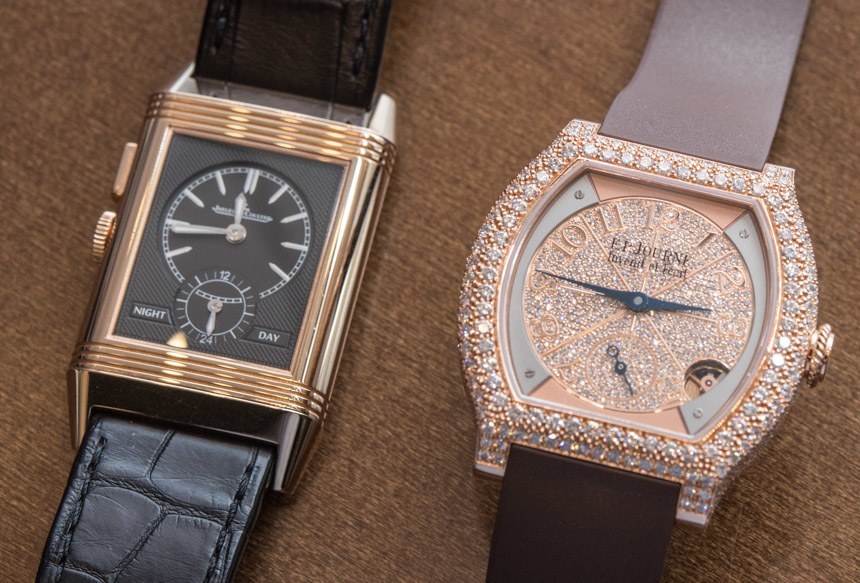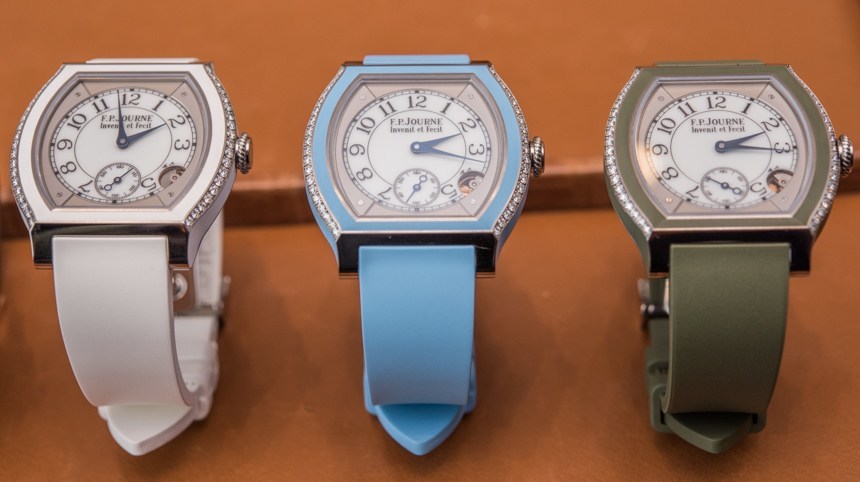
Although it was as early as January 2014 that we debuted the F.P. Journe Élégante (hands-on here), it is only now that the first quartz movement equipped wristwatch from F.P. Journe – one of the undisputed greats among today’s independent master watchmakers – finds its way to the U.S. market. It was on this occasion that, in the F.P. Journe boutique on Sunset Boulevard in Beverly Hills, we sat down with Francois-Paul Journe for what turned out to be an hour-long conversation about the finer details of the F.P. Journe Élégante and the movement inside of it.
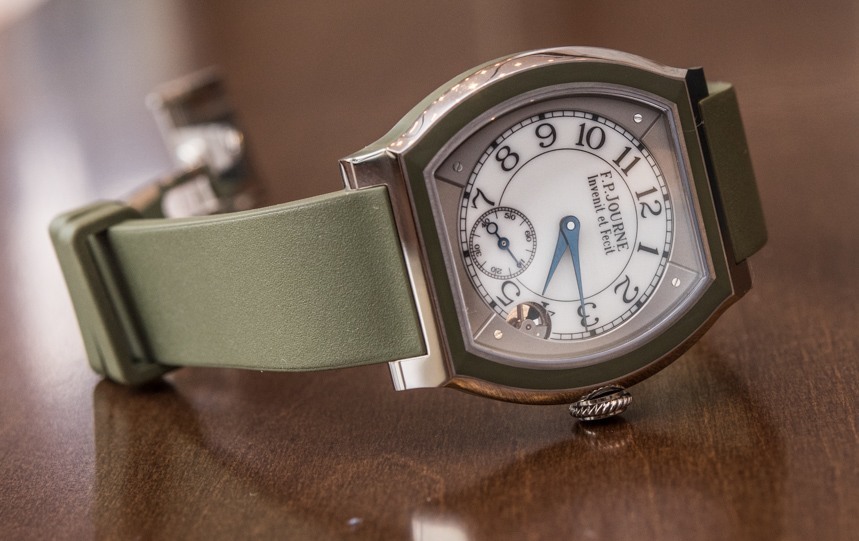
There were many different questions that we had prepared prior to the conversation: how one of the most respected traditional watchmakers of our age ended up making a quartz movement; how involved he had been in the process; what his approach was to what is generally accepted to be a “soulless” alternative to mechanical watches with a beating heart; and, last but not least, what makes this quartz movement special?
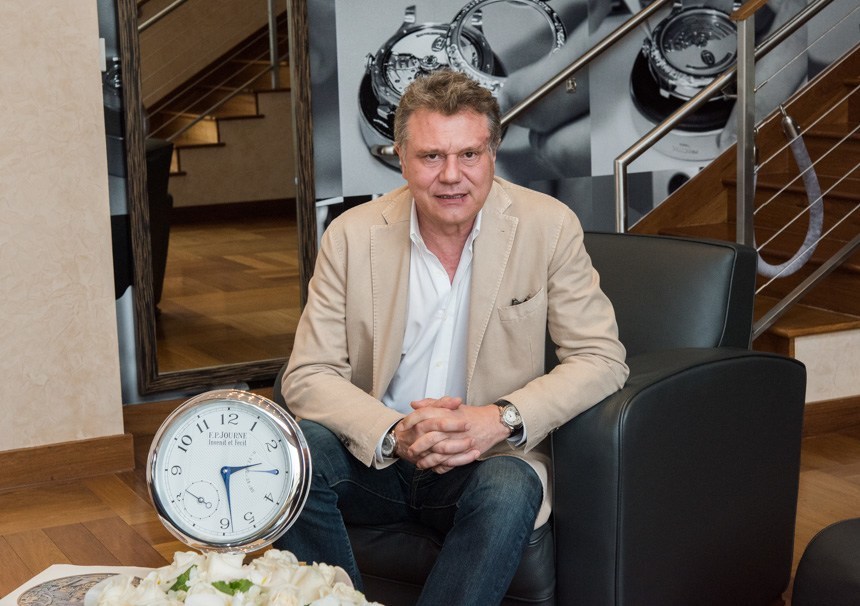
What stood out to me early on in our discussion was that Francois-Paul Journe talks as passionately (yes, that) and openly about this movement as any other of his creations. As I could tell, for him, it was a challenge as important as any other in his career: the F.P. Journe Élégante spent as much as eight years in development, and as I learned, because its caliber was designed from the ground up, it posed as many issues and obstacles as a mechanical movement could.
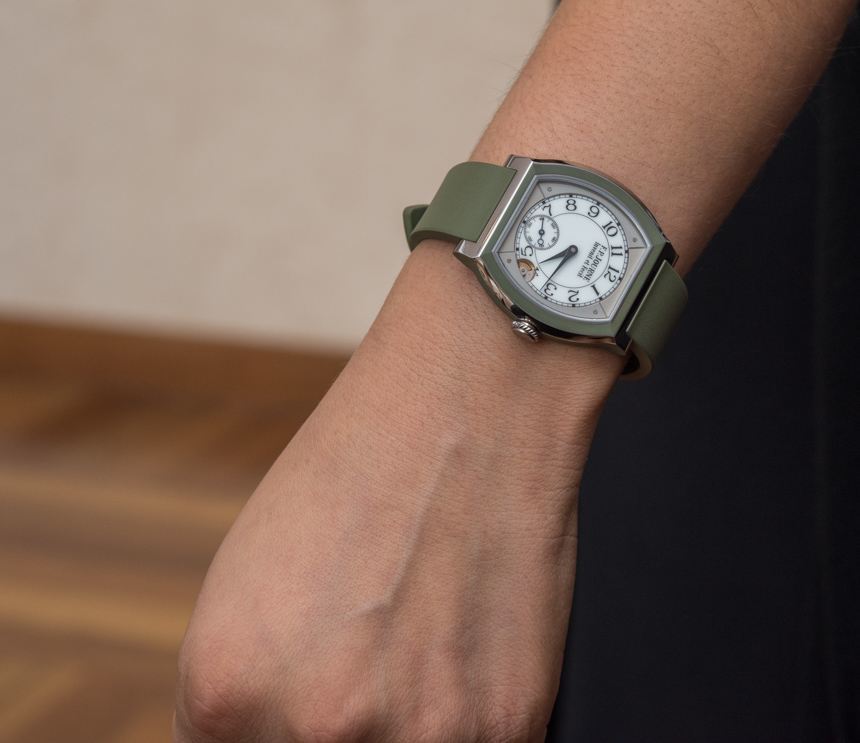
So how and why did he even begin to bother with a quartz watch? It would not be much of an overstatement if we said the Swiss watch industry, even to this day, “seriously dislikes” quartz. It almost destroyed them some four decades ago, and just as they were at the time, they still are very proud of how their movements with a beating heart generally enjoys greater respect and love in the watch-lover community. With that in mind, over the last couple of years, we have been seeing major and smaller luxury brands alike have a go at creating (oftentimes quite complicated) mechanical timepieces for women to offer them an alternative and help get them closer to “haute horlogerie.” This leads us to the important discussion about quartz movements in general and especially their shortcomings when it comes to the electronic movements installed in ladies’ watches.
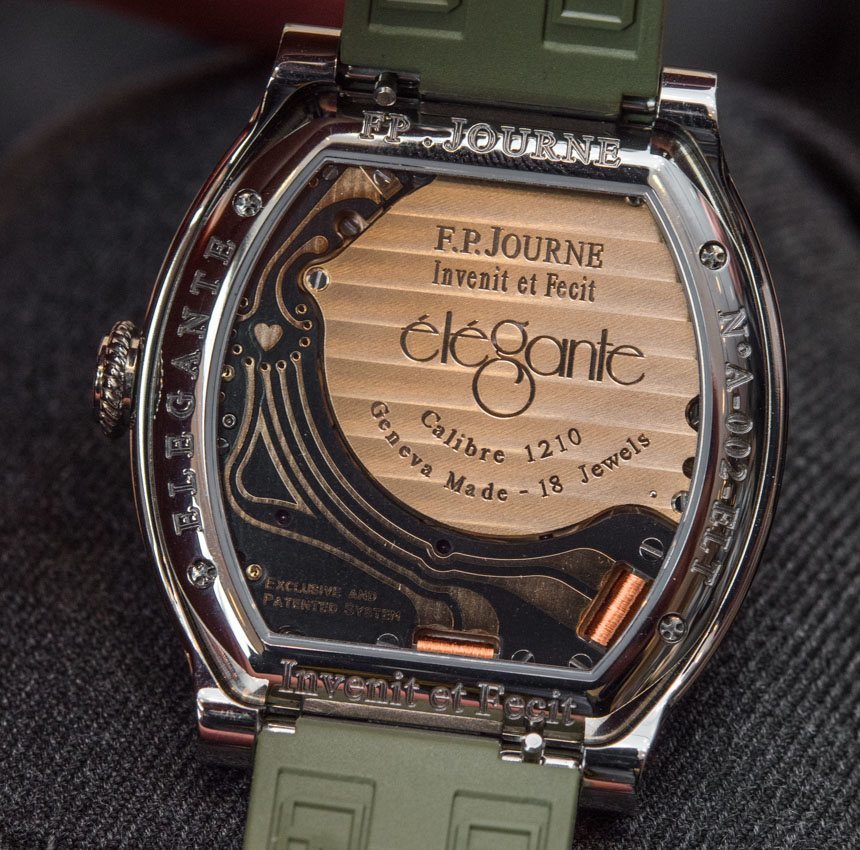
The primary issue at hand was that what most major luxury brands have been doing with their oftentimes bejeweled and hence highly expensive ladies’ pieces was equip them with cheap, basic, hideously uninteresting quartz movements that showed little to absolutely no difference or offered little to no extra functionality, over not just those found in competitors’ watches but also the movements found in much cheaper timepieces.
However, although mechanical movements may seem like a great alternative, experience shows that’s not entirely the case. Now that a considerable amount of time has passed, we can see that not many (if any) of higher-end mechanical ladies’ watches have become hot sellers – relatively speaking, of course. Beyond aesthetics, comfort is another very important factor for women buying high-end watches – which makes perfect sense – and as Francois-Paul explained, mechanical watches that need to be worn or at least wound every few days, or otherwise reset, don’t tick that important box. So what Journe did was venture to create a quartz watch that was superior in just about every way possible when compared to other quartz movements in high-end ladies’ watches – in fact, in just about any luxury timepiece. Let’s get back on track now and have him tell how he did it.
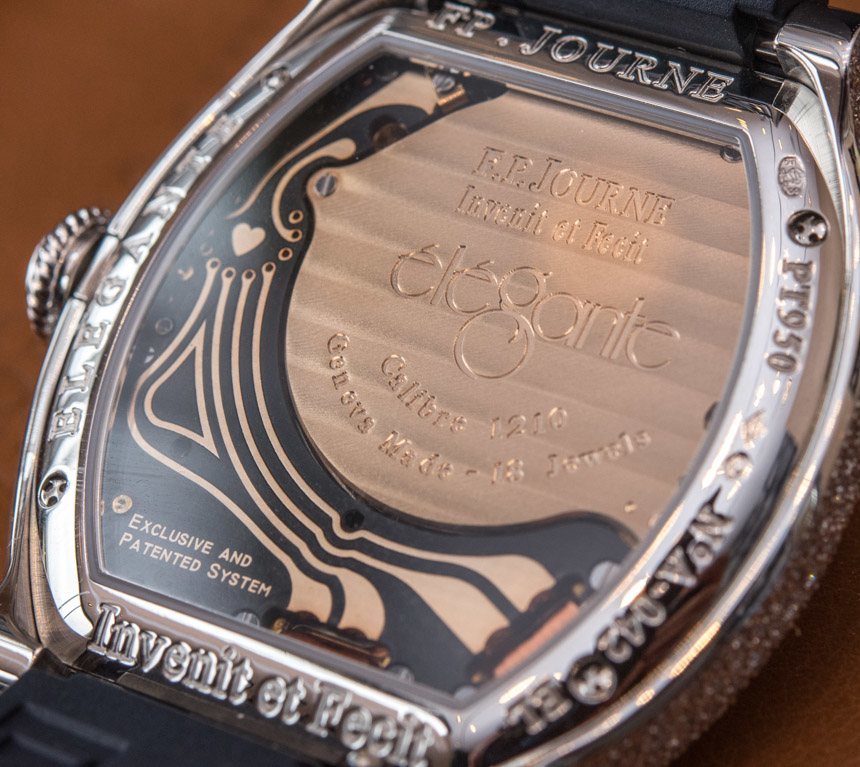
The F.P. Journe quartz movement project started out on page 1 with the battery. I must say I did not expect to learn that F.P. Journe set out to create the Élégante not by designing its exterior, and beyond simply engineering the movement itself, but more specifically, the battery and all the components that could help extend its life. I couldn’t help but realize the fascinating resemblance between the task he faced about 8 years ago and the one makers of smartwatches face today: battery life. We are talking about a “power reserve” that runs on a different scale though: the F.P. Journe Élégante has a “shelf-life” of up to 18 years, meaning that even if not worn but safely put away in a safe, it will remain functional for well over 15 years.
As we noted, and as overall experience based on detailed feedback indicates, a large percentage of women wearing high-end timepieces prefer not to spend time resetting the time and other indications on their watches every week or less when they run out of power reserve and stop. Therefore, enabling the F.P. Journe Élégante to run on a single battery for as long as possible was of top priority. The watch, as I was told, uses a standard sized battery – albeit always the one that has the highest life-time rating at the time of the assembly of the movement – so the caliber does not rely on some proprietary or highly unusual battery technology.
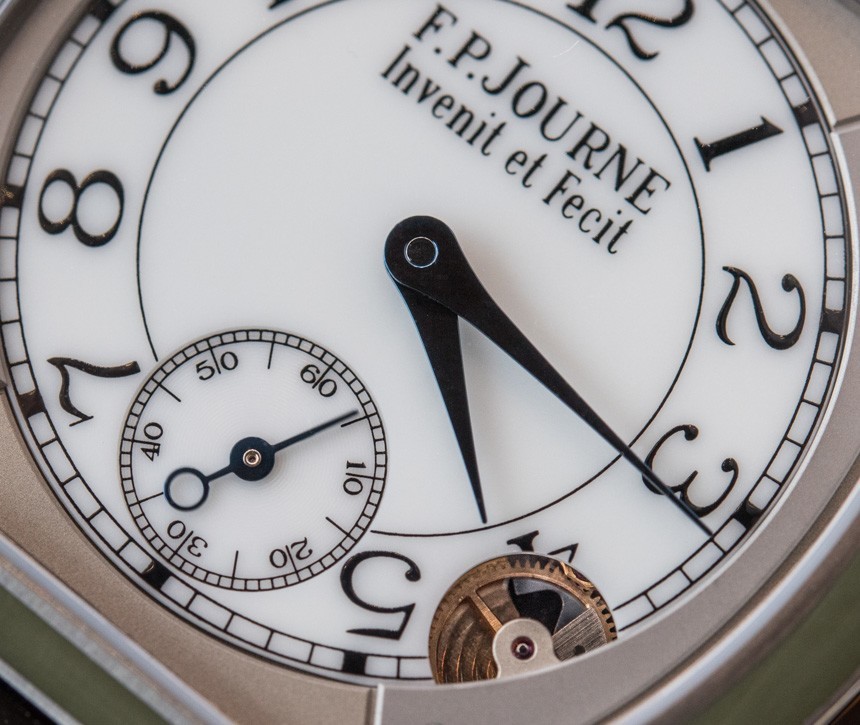
There are, however, a few key details that help it manage to more than double the life expectancy of the battery. The primary complication is one that stops the hands from moving, hence preserving battery power – unsurprisingly, the motors (more on those soon) driving the hands consume by far the most energy in a quartz movement. Therefore, the Calibre 1210 inside senses when the watch has been stationary for more than 30-40 minutes and stops the motors from driving the hands, while the timekeeping functionality is, of course, still running. Once the watch has been picked up, the motors drive the hour and minute hands in the shortest route possible to indicate the actual and accurate time.
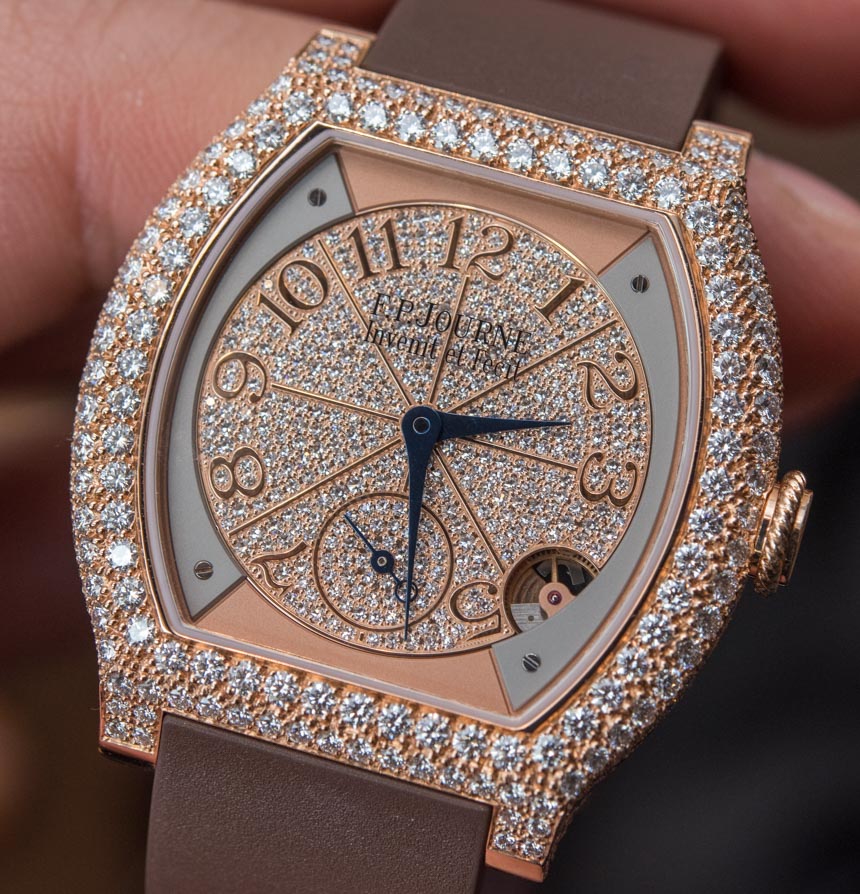
It is here where we should note that these nuances – and in fact, the complete movement design – have been conceived by F.P. Journe himself, including the functions, movement layout, and basically every other detail of the 1210 movement. He worked together with an external company in Switzerland that specializes in quartz movement, and it was they who provided the timekeeping module and motors to move the hands, while all mechanical components, wheels, pinions, bridges, and other parts are made on the Journe premises.
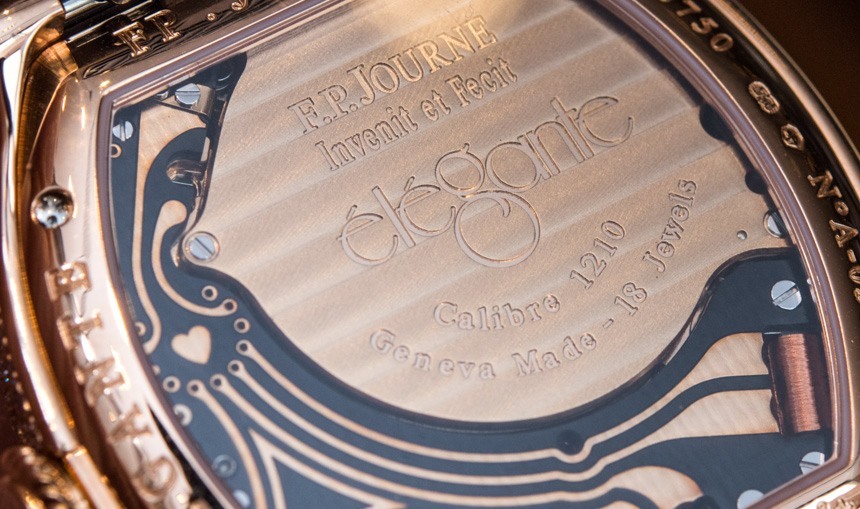
Speaking of motors, Journe has designed the Élégante’s movement to incorporate two separate motors for the hour and minute hands. The reasoning behind this decision is twofold: first, as he explained, the two motors make for shorter gear trains when compared to just one motor driving both hour and minute hands. With two wheels driving the hour and four driving the minute hands, the number of necessary components have been reduced to a minimum.
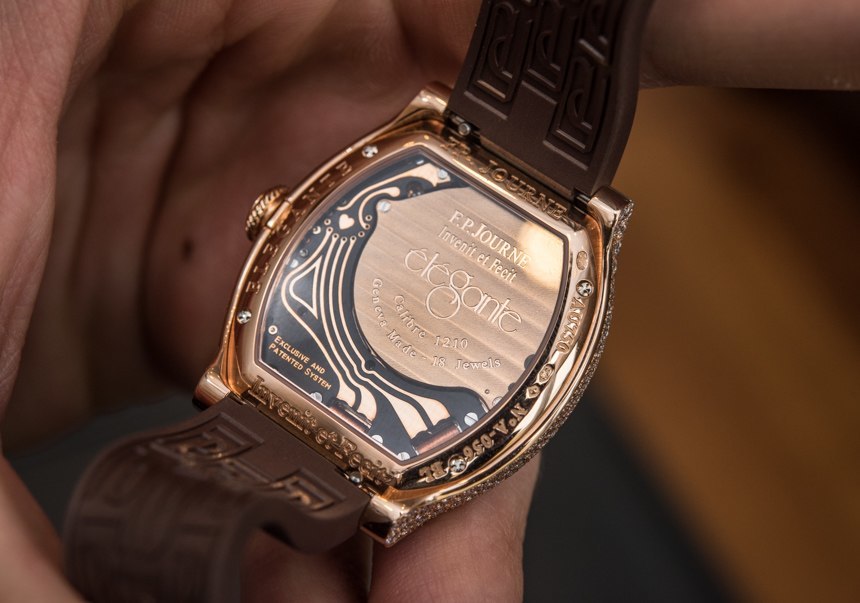
The secondary reason concerns lubrication: there is no point to extending battery life to up to 16 years if the lubricants all degrade to beyond unusable in less than a third of that time. Hence, the 1210 movement in all F.P. Journe Élégante watches have no lubricated parts at all, rendering the pieces virtually maintenance free until a battery change is necessary (i.e. even with regular wear for around 8 years). That is no small feat, especially if one considers that the movement has no solar powered or other re-charging capabilities, and it shows how seriously the issue related to comfort and not having to reset the time on the watches was taken during the engineering period. Having seen the motion of the hands as they are being reset by the motors, I can say that the hands move with a swift and even motion, and because the movement determines the shortest route (clockwise or counter-clockwise) for each hand to their desired positions, the resetting takes no longer than about five seconds.

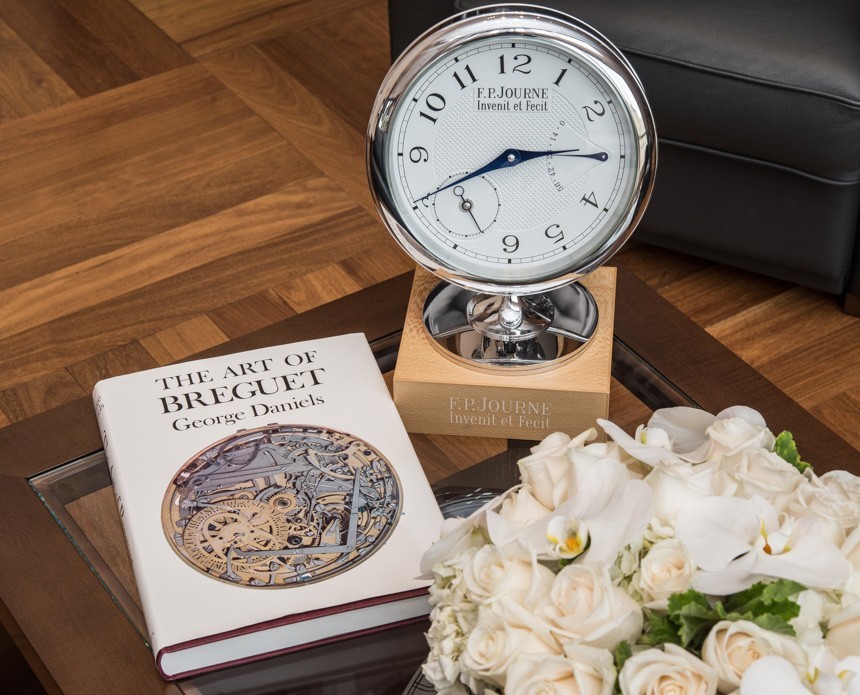
Some exceptional decoration in the Beverly Hills boutique, including The Art of Breguet book by George Daniels
I was going to ask Francois-Paul how it was different to work on a quartz movement after his incredible mechanical calibers – just think of the Centigraphe Souveraine or Sonnerie Souveraine as fitting examples – since quartz movements are often (not without reason) looked down upon for the electronic movements’ lack of “soul.” However, before I could ask the question, he answered it himself, by telling me all these details regarding the movement and its design process. Clearly, he would not have dedicated so much of his time and effort to it if he had not enjoyed the challenge.
What happened is that crafting a new quartz movement that offered better functionality (through extended battery life) and new and highly improved aesthetics (through thoughtful movement design and quality of execution – all exposed by a sapphire case-back) has proven to be a challenge that was interesting enough for him to take on, after having spent some 30 years conceiving watches and calibers.
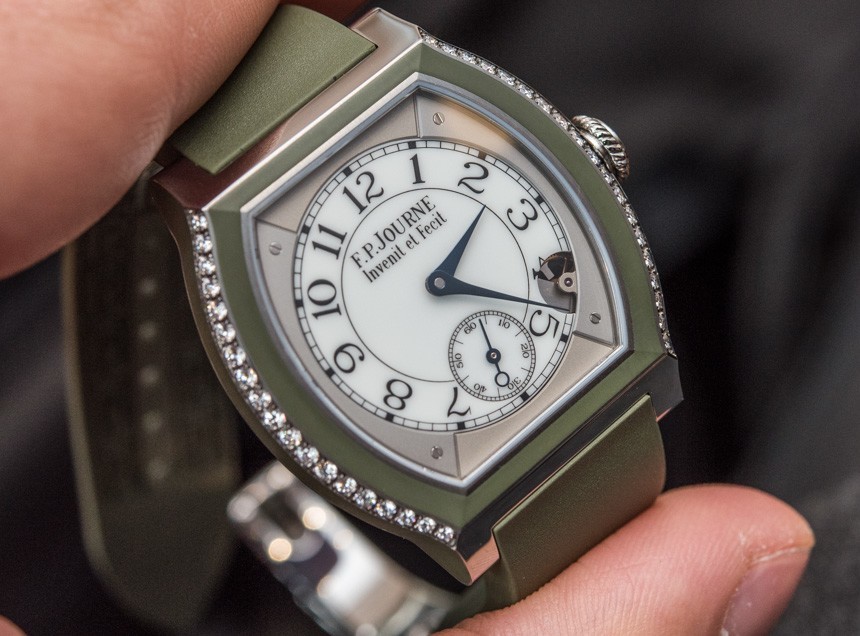
The next logical question (in my mind) concerned how he perceived the reaction to the F.P. Journe Élégante and its movement – but not from the watch enthusiast and collector community, but from his colleagues, i.e., other contemporary master watchmakers. For the first time into our conversation, Francois-Paul – not to my surprise – gave me a somewhat shorter reply, noting the primary reaction as “surprise.” Needless to say, the F.P. Journe Élégante and its quartz movements are here because he thought that he had a name and reputation solid and established enough not to be concerned about venturing into the proprietary, battery-powered (and, for the most part, totally uncharted) territories of watch movement design – and we need not tell you that he was absolutely correct in that assessment.
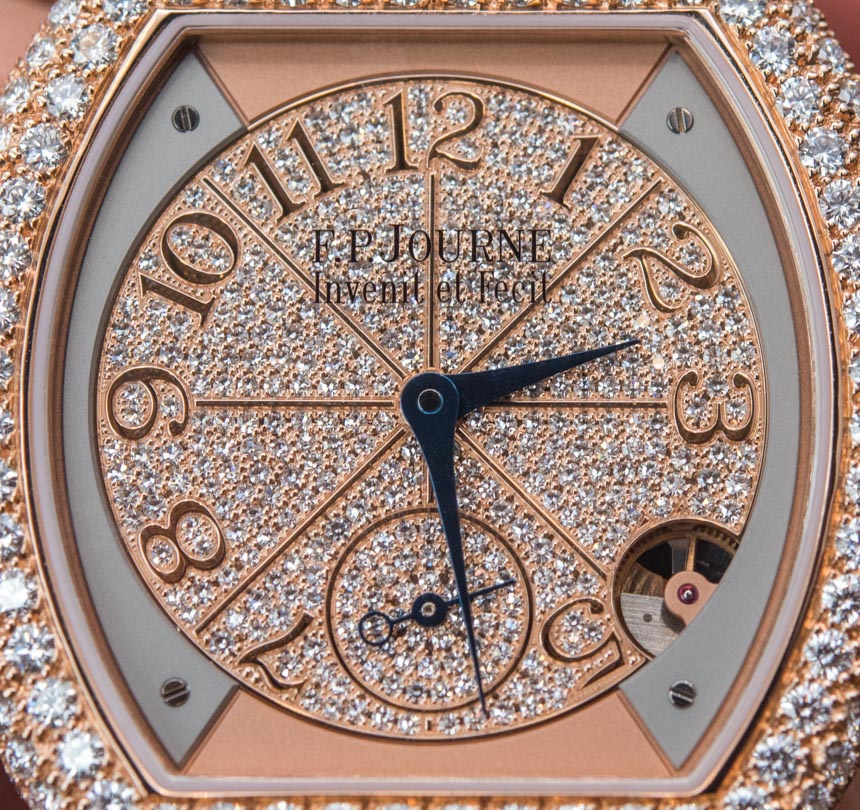
Given the amount of time and investment the development of the 1210 quartz caliber necessitated, I was curious to know what the future looked like as far as battery-powered timepieces bearing the F.P. Journe name were concerned. As he explained, there already are numerous requests for a quartz movement-equipped men’s watch, as collectors of the brand are looking for a “weekend watch,” something that they can wear during activities that would put the structural integrity of more delicate mechanical timepieces from the manufacture at risk. Therefore, the future looks bright, and not only for the continuation of the F.P. Journe Élégante line, but also for the Journe quartz movement in general. Those intrigued by the idea of an advanced quartz men’s watch from F.P. Journe should not hold their breath, though, as the movement used in those will be a further developed version with some basic, but nonetheless added functionality – such as a date or similar.
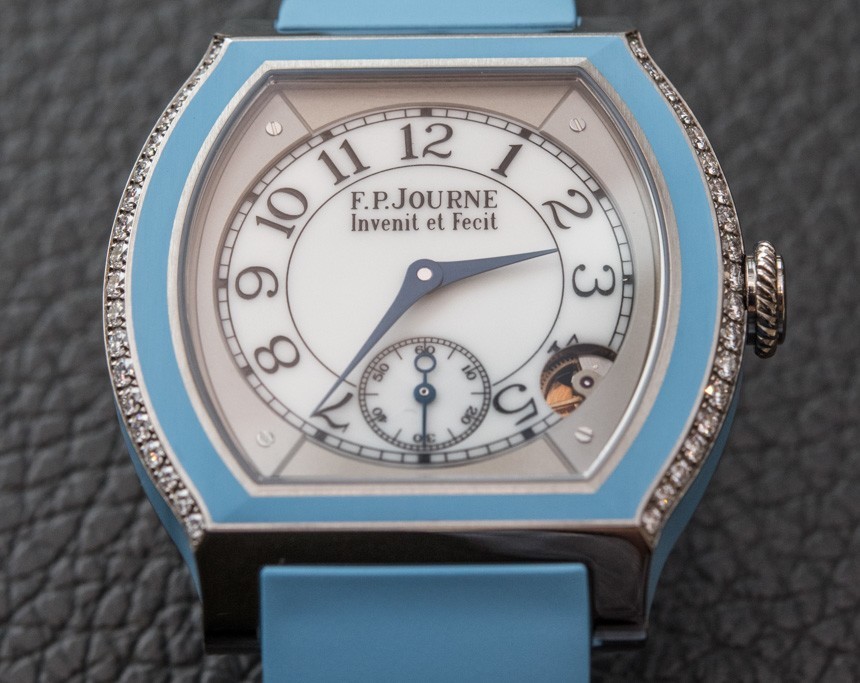
Another aspect of the F.P. Journe Élégante that I found fascinating and, more importantly, that is also a very unusual element to watches manufactured by highly respected independent watchmakers: the rubber pieces of the case. Watch enthusiasts’ approach to this is much the same as it is to quartz: it has happened far too many times before that brands used quartz movements and/or rubber parts in a case to enhance appeal to a female audience – while at the same time, cheapening the feel, look, and overall value of their offering considerably in the eyes of more discerning women and men watch collectors.
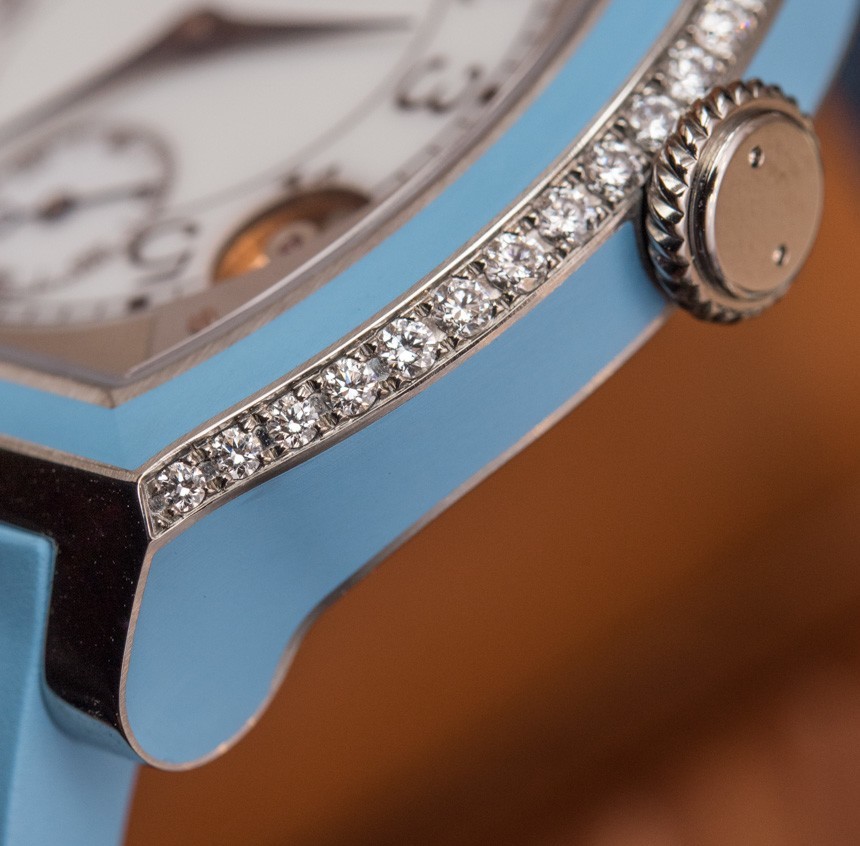
Using rubber in the case of an F.P. Journe watch is walking on thin ice to say the least, but once again, thanks to our discussion, I could see the reasoning – and thoughtful decision making process – behind it. Ordinary rubber inlays to a case look and feel cheap the absolute majority of the time, which explains why there are very few luxury brands on the market today who do cases with rubber components (and get it right).
The F.P. Journe Élégante started out as a normal, solid, tortue-style case (much like the one seen on the remarkable Vagabondage II), and while some suppliers capable of doing rubber-inlaid cases had been contacted, at first, Journe decided to stay away from such design elements. It was later into the development of the F.P. Journe Élégante that he learned about a company that was capable of “rubber fusion,” where the rubber is injected into the case in a way that it creates a seamless seal and appears to be an integral part of the case. The problem with just about anything that’s been moulded – and here, we are talking about a similar process – is that although the raw surface may look promising, one never knows what lies underneath, until the final finishing process begins.
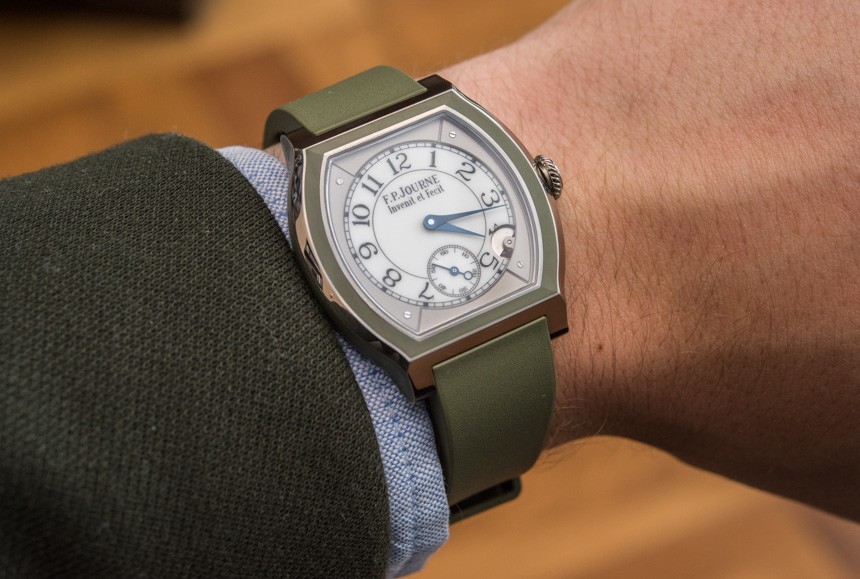
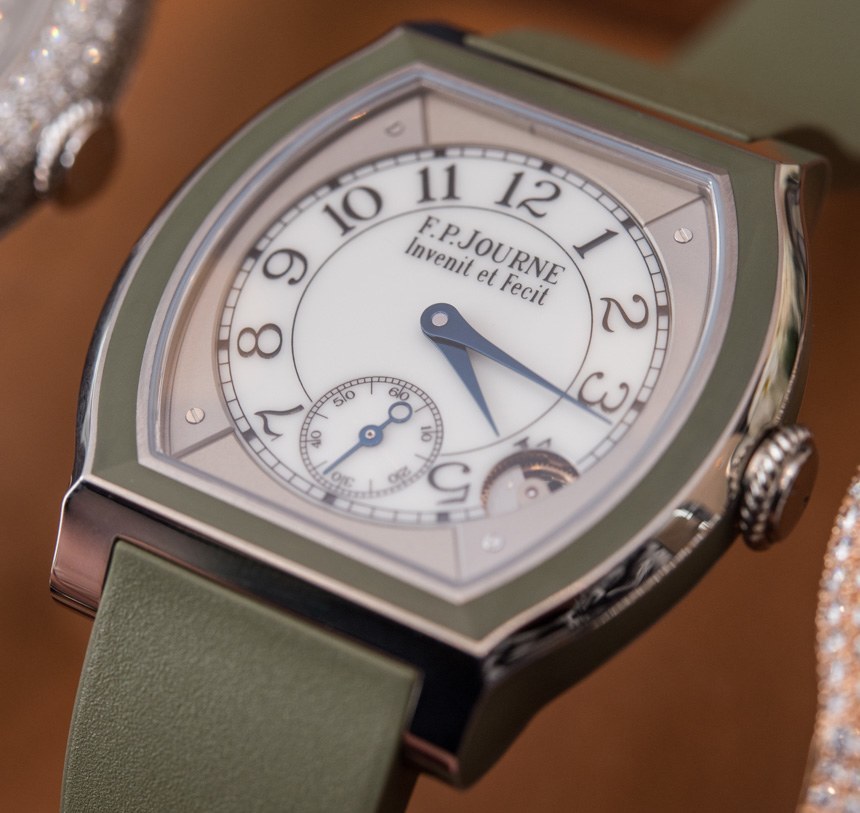
In practice, that means that once the top surface of the rubber is removed to perform finishing and create a visually flawless case, about 20% of the time, it turns out that the rubber has bubbles and other imperfections that become visible – and these cannot be corrected or removed. When this happens, the case cannot be saved and has to be re-cast and reworked from scratch once again – a massive pain in the neck.
Or it would have to be, had Francois-Paul not come up with a rather ingenious idea to save the majority of these cases. The solution is as follows: every case that receives rubber inlays is cast to be 0.1 millimeter larger than originally designed. When the first attempt at the rubber fusion has been successful, the case is finished and polished up in this state – and the finished case remains that ever so slightly larger than originally intended. On the other hand, if any of the rubber parts (in the bezel or in any of the sides of the case) shows imperfections, there can be another attempt at completely redoing the fusion without discarding the case – and it is that extra 0.1 mm in the size of the case that allows for the removal of the rubber and the refinishing of the case after the second attempt.

What’s ingenious in this is that no one would be able to tell that fraction of a millimeter in difference (especially because the entire case has been finished evenly), and yet, that microscopic amount of extra material gives the craftsmen enough room to work with and have another go at the rubber fusion. This is the scale at which watchmaking operates, and hence the reason why this well-established know-how being used to solve a new-found problem is so impressive.
To make the effect of this method more tangible, allow me to give you a brief example: if 100 cases are made and 20% of the first rubber fusion attempts are not entirely perfect, those 20 initially rejected pieces can be worked on once again. The chances for getting them right remain the same, and so of those twenty only 20% will be rejected, hence reducing the number of non-usable pieces from the original 20 to just 4 parts – out of the initial 100. 4% against 20% of rejection is an enormous difference and one that has a massive effect on the efficiency of the production and also on the product’s final price.
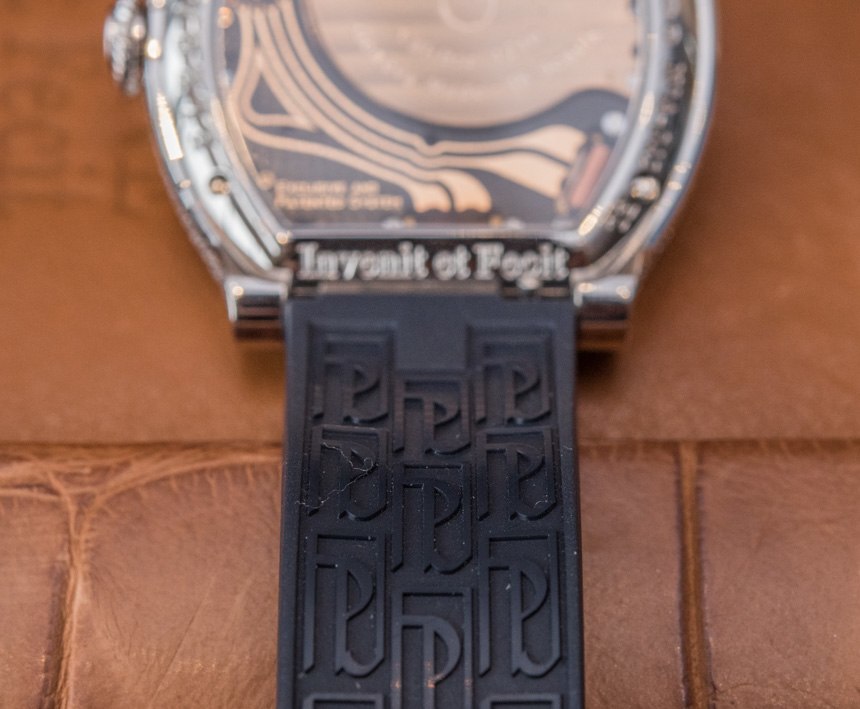
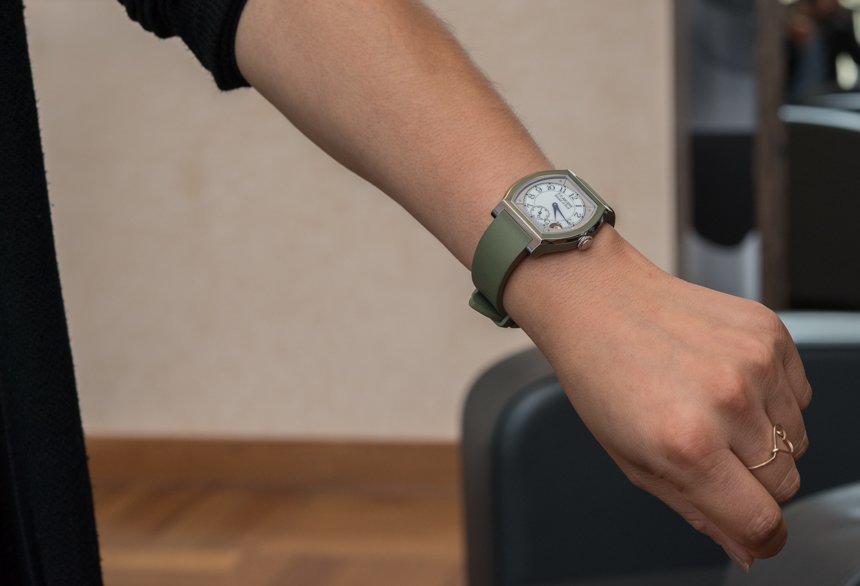
In essence, with the 1210 quartz caliber, F.P. Journe sought to cater to those watch enthusiasts – primarily among women – who wanted to take advantage of the comfort that is provided by the long power reserve of battery-powered watches and brought it to another level; all the while, making it more beautiful to look at and easier to accept in a watch that costs ten to sixty thousand U.S. dollars. On the other hand, the rubber fusion part of the case was an issue the end consumer likely never faced before – but that had to be solved nonetheless in order to create a watch that felt and appeared to be of as high a quality as those familiar with the brand have grown used to. And when it comes to a three-hand watch without any in-your-face complications, this is about as advanced and refined as it can get – which explains why it took over 8 years to develop and why it bears the F.P. Journe name on the dial.

Prices for the F.P. Journe Élégante are $11,500 for for the titanium case and $16,100 for the same version with diamonds; $27,400 for the 18k red gold model, $30,900 for the one in platinum, $60,300 for the red gold with full pavé diamonds, and, last but not least, $65,300 for the full pavé diamond piece with a platinum case. fpjourne.com

